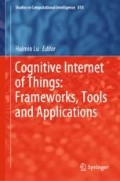Abstract
In order to solve the problem that the nonlinear distortion of the zoom lens varies with the focal length changes, a fast correction method for zoom lens based on the minimum fitting error of vanishing points is proposed. Firstly, based on the radial distortion model, the equation between the vanishing point and the radial distortion coefficient is established according to the geometric constraint of the vanishing point. And then, according to the principle of the deviation error minimization, use the least squares to fit the equation of straight line of the corrected points. Finally, the variation of distortion parameters with focal length is analyzed, the distortion parameter table between distortion parameter and focal length and the empirical formula of fitting are established. The results of images correction show that the proposed method can effectively correct the nonlinear distortion of zoom lens.
Access this chapter
Tax calculation will be finalised at checkout
Purchases are for personal use only
References
Lu, H., Li, Y., Chen, M., Kim, H., Serikawa, S.: Brain intelligence: go beyond artificial intelligence. Mob. Netw. Appl. 23(2), 368–375 (2018)
Lu, H., Li, Y., Mu S., Wang, D., Kim, H., Serikawa, S.: Motor anomaly detection for unmanned aerial vehicles using reinforcement learning. IEEE Internet Things J., 1–8 (2017)
Wang, Z., Mills, J., Xiao, W., Huang, R., Zheng, S., Li, Z.: A flexible, generic photogrammetric approach to zoom lens calibration. Remote. Sens. 9(3), 1–15 (2017)
Wu, B., Hu, H., Zhu, Q., Zhang, Y.: A flexible method for zoom lens calibration and modeling using a planar checkerboard. Photogramm. Eng. Remote. Sens. 79(6), 555–571 (2013)
Fang, W., Zheng, L.: Distortion correction modeling method for zoom lens cameras with bundle adjustment. J. Opt. Soc. Korea 20(1), 140–149 (2016)
Zhou, Q., Liu, J.: Rapid nonlinear distortion correction of aerial optical zoom lens system. Acta Optica Sinica 35(4), 0411001 (2015)
Yao, N., Lin, Z., Ren, C., Yang, K.: A distortion model suitable for nonliner distortion correction of digital video camera. Laser Optoelectron. Prog. 51(2), 022204 (2014)
Lu, H., Li, B., Zhu, J., Li, Y., Li, Y., Xu, X., He, L., Li, X., Li, J., Serikawa, S.: Wound intensity correction and segmentation with convolutional neural networks. Concurr. Comput. Pract. Exp. 29(6), 1–10 (2016)
Lu, H., Li, Y., Uemura, T., Kim, H., Serikawa, S.: Low illumination underwater light field images reconstruction using deep convolutional neural networks. Futur. Gener. Comput. Syst., 1–19 (2018)
Serikawa, S., Lu, H.: Underwater image dehazing using joint trilateral filter. Comput. Electr. Eng. 40(1), 41–50 (2014)
Shin, H., Oh, J., Sohn, K.: Automatic radial distortion correction in zoom lens video camera. J. Electron. Imaging 19(4), 2843–2850 (2010)
Tsai, R.Y.: A versatile camera calibration technique for high-accuracy 3D machine vision metrology using off-the-shelf TV cameras and lenses. IEEE J. Robot. Autom. 3(4), 323–344 (2003)
Zhang, Z.: A flexible new technique for camera calibration. IEEE Comput. Soc. 22(11), 1330–1334 (2000)
Huang, J., Wang, Z., Xue, Q., Gao, J.: Calibration of camera with rational function lens distortion model. Chin. J. Lasers 41(5), 0508001 (2014)
Liu, D., Liu, X., Wang, M.: Automatic approach of lens radial distortion correction based on vanishing points. J. Image Graph. 19(3), 407–413 (2014)
Fitzgibbon, A.W.: Simultaneous linear estimation of multiple view geometry and lens distortion. In: Proceedings of the 2001 IEEE Computer Society Conference on Computer Vision and Pattern Recognition, 2001. CVPR 2001, vol. 1, pp. I-125–I-132. IEEE (2001)
Zhou, Q., Liu, J.: Rapid nonlinear distortion correction of aerial optical zoom lens system. Acta Optica Sinica 35(4), 0411001 (2015)
Zheng, S., Wang, Z., Huang, R.: Zoom lens calibration with zoom- and focus-related intrinsic parameters applied to bundle adjustment. ISPRS J. Photogramm Remote. Sens. 102, 62–72 (2015)
Zhu, Z., Liu, Q., Song, R., Chen, S.: The sparse least square support vector regression for estimating illumination chromaticity. Color Res Appl. 43(4), 517–526 (2018)
Chen, T., Ma, Z., Wu, X., Wu, D.: Robust correction method for camera lens distortion. Control. Decis. 28(3), 461–465 (2013)
Acknowledgements
This research is supported by the Program of Jiangxi Outstanding Youth Talent Assistance (Grant No. 20162BCB23047), and Science and Technology Pillar Program of Jiangxi Province (Grant No. 20151BBE50116).
Author information
Authors and Affiliations
Corresponding author
Editor information
Editors and Affiliations
Rights and permissions
Copyright information
© 2020 Springer Nature Switzerland AG
About this chapter
Cite this chapter
Zhu, Z., Liu, Q., Wang, X., Pei, S. (2020). Distortion Correction Method of Zoom Lens Based on Vanishing Point Geometric Constraint. In: Lu, H. (eds) Cognitive Internet of Things: Frameworks, Tools and Applications. ISAIR 2018. Studies in Computational Intelligence, vol 810. Springer, Cham. https://doi.org/10.1007/978-3-030-04946-1_35
Download citation
DOI: https://doi.org/10.1007/978-3-030-04946-1_35
Published:
Publisher Name: Springer, Cham
Print ISBN: 978-3-030-04945-4
Online ISBN: 978-3-030-04946-1
eBook Packages: Intelligent Technologies and RoboticsIntelligent Technologies and Robotics (R0)

